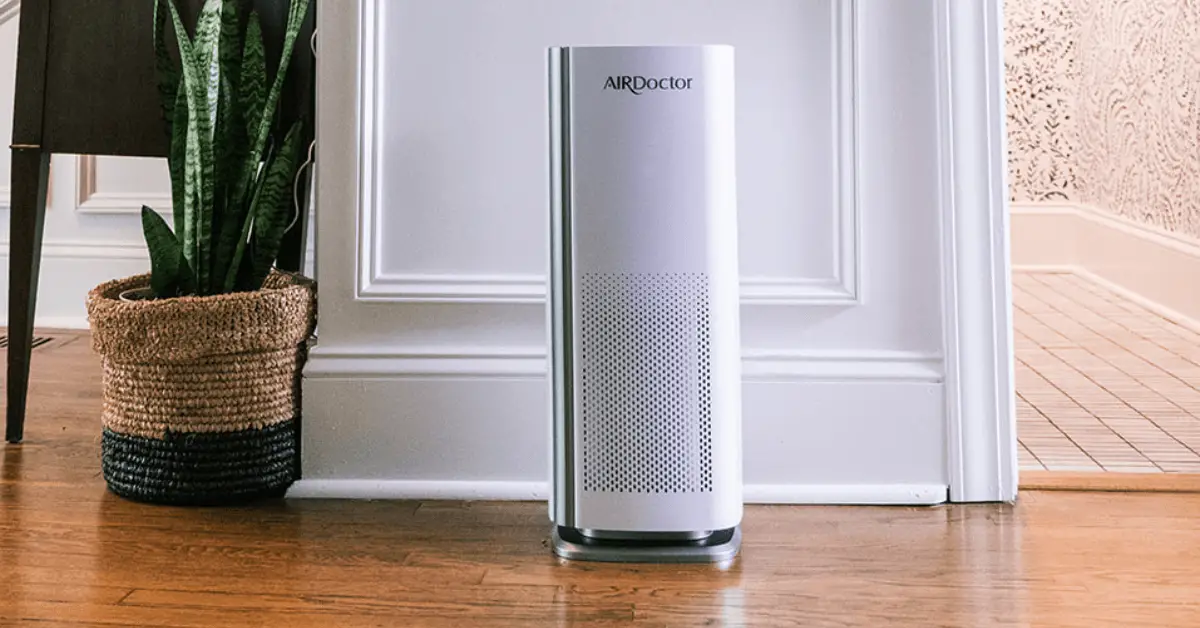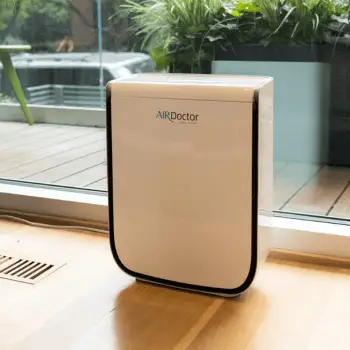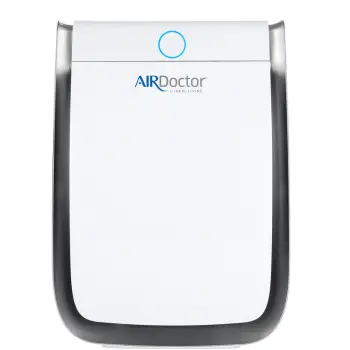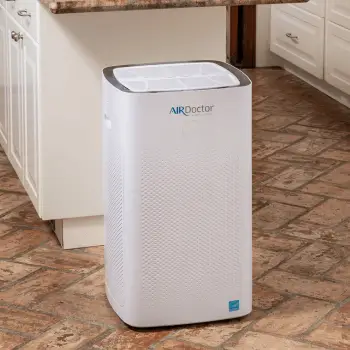My Honest Air Doctor Air Purifier Review
*Please note that as an Amazon Associate and an associate of other companies, I earn from qualifying purchases at no extra cost to you. I appreciate your support! Click here to see the full affiliate disclosure.
I am pretty particular about the products that I use. I check all the ingredients before I buy it whether it’s hand soap, body wash, cleaning products, or even shampoo for my dog! In addition to all these things, I’m also very conscious about the air quality in my house.
I read that indoor air quality is worse than outdoor. (Well, except during forest fires.) In addition to the 25 plants that I have scattered throughout my house, I also own two Air Doctor air purifiers. Even though I am an affiliate for these air purifiers, I truly believe they are the best. (Otherwise, I wouldn’t have bought them!) I’ve had them for at least 5 years and I’ll tell you why I keep them running 24 hours a day and highly recommend them.
The picture above is the Air Doctor 1000
Are Air Purifiers Good For Your Health?
Absolutely! There are many things in our environment that give off VOCs. What are VOCs? VOCs stand for volatile organic compounds. They are compounds that are released into the air from various sources including but not limited to furniture, carpeting, flooring, permanent markers, dry-cleaned clothing, air fresheners, wood preservatives, cleaning products, and paint. Some well known and studied VOCs include benzene, formaldehyde, and polycyclic aromatic hydrocarbons (PAHs). These compounds are known to cause cancer, DNA alterations, and oxidative stress. (Source)
In addition to VOCs, there are also unhealthy particles in the air including, gases, dust, pollen, mold spores, smoke, pet hair, dander, bacteria, and viruses. Luckily, Air Doctor air purifiers reduce all of these particles.
The picture above is the Air Doctor 2000.
Does The AirDoctor Remove Mold And Can Mold Be Removed From the Air?
Yes and yes. I’ve witnessed this first-hand with my Air Doctor air purifier. We had a dehumidifier in the basement which grew mold in the water tank since I forgot to empty it for several days. I stupidly decided to dump this moldy water in the bathtub and my Air Doctor went crazy catching all those mold spores that I just made airborne.
When the Air Doctor finds a containment in the air, it will increase its speed to remove it faster. The Air Doctor air purifier that I have also has a circle on the front of the machine that turns different colors at different speeds. What I learned from this experience is one, my Air Doctor works, and two, never dump moldy water down the bathtub. Take it outside!
The picture above is the Air Doctor 3000 series (aka 3500).
How Long Do AirDoctor Purifiers Last?
I have an Air Doctor 3000 series. There are different models available, but regardless of which one you decide to get, all of the AirDoctors have two filters, a Hepa filter and a carbon filter. The Hepa Filter captures airborne contaminants like dust, pollen, mold spores, smoke, pet hair, dander, bacteria, and viruses. The carbon gas trap/VOC filter reduces odors, gases, and volatile organic compounds (VOCs) like formaldehyde. The Hepa filter needs to be changed once a year and the carbon needs to be changed every 6 months.
Attached to the carbon filter is a prefilter. You have the option of buying replacement filters for these too, but I have never bought a replacement. The Air Doctor website says that you can vacuum these prefilters from time to time so that’s what I do. When you change out your carbon filter every 6 months, a new prefilter comes with it.
Like I said earlier in this post, I’ve had my Air Doctors air purifiers for 5 years and they are still working just fine.
The picture above is the Air Doctor 5000 series (aka 5500).
What Are The Benefits of AirDoctor?
And This Is Why I Recommend It…..
- It has 3 filters if you count the pre-filter. Not all air purifiers have 3 filters. The Hepa and the Carbon filter remove different particles so it’s very important to have both.
- The Heps filter is independently tested to remove particles as small as 0.003 microns— 100 times smaller than the HEPA standard. It is also independently tested and proven to remove 99.97% of the live SARS-CoV-2 virus in a test chamber, and 99.99% of tested bacteria and viruses, including H1N1.
- The Air Doctor 3000 series (the one I have) lights up to let you know if it senses a containment. Red means it’s working faster to remove something in the air (high speed), orange means there is a small amount of containment in the air (medium speed), and blue is clean air (low speed). One day my Air Doctor turned red while I had my windows open during the day. I checked my phone and it turns out the pollen count was extremely high in my area. I closed my windows immediately and it eventually went back to blue (low speed).
- They are very quiet! I don’t even notice that my purifiers are on and I have them running 24/7. Their website states that their fans are 30% quieter than fans found in ordinary air purifiers.+
- I only have to change the filters every 6 months (for carbon) and 1 year (for Hepa).
- There is night mode feature on it if you don’t want it emitting any light.
- A light goes on when it needs a filter change so you don’t have to keep track of it.
- I don’t know if this is coincidental, but my husband’s allergies seem to be a lot better. He was a mess before our Air Doctor air purifiers.
- There are 4 different Air Doctor air purifiers. They come in multiple sizes to help fit your budget and your space. The smallest is the Air Doctor 1000 followed by the Air Doctor 2000, the Air Doctor 3000 (aka 3500), and the Air Doctor 5000 (aka 5500). I’ve scattered pictures throughout this blog post so you can see what they look like.
- The Air Doctor 1000 circulates the air in 285 sq. ft. 4x/hour or 570 sq. ft. 2x/hour.
- The Air Doctor 2000 circulates the air in 305 sq. ft. 4x/hour or 610 sq. ft. 2x/hour.
- The Air Doctor 3000 circulates the air in 630 sq. ft. 4x/hour or 1,260 sq. ft. 2x/hour.
- The Air Doctor 5000 circulates the air in 1,043 sq. ft. 4x/ hour or 2,086 sq. ft. 2x/hour.
- There is an option to have a regular Air Doctor air purifier or a “Smart Purifier”. The smart purifier has wifi. Since I try to avoid EMFs when I can, I opted for the regular Air Doctor air purifier since that will be lower in EMFs than the wifi one, but if you want the smart purifier, that’s up to you! You can hook it up to your phone and have real time air quality alerts, filter change alerts, and device control among other things.
Final Thoughts On The Air Doctor Air Purifier
I personally love my Air Doctor air purifiers and would highly recommend them. They have alerted me to a high pollen count outside and mold in my house. They also get rid of my cooking fumes when I overcook things. (Maybe I need to work on my cooking skills!)
In addition, my Air Doctors have made me feel more at ease when I receive air quality alerts on my phone and I’ve just had my windows open all day. Not to mention the wildfires! During these fires, the air quality reached the 200s (and even higher for some individuals). Air quality is so important for our health. For me, an air purifier that works well like the Air Doctor is non-negotiable.
Are you into non-toxic living? Check out how to make your kitchen non-toxic here.
Follow Clean Mindful Living On Social Media











